Henriette Lersch
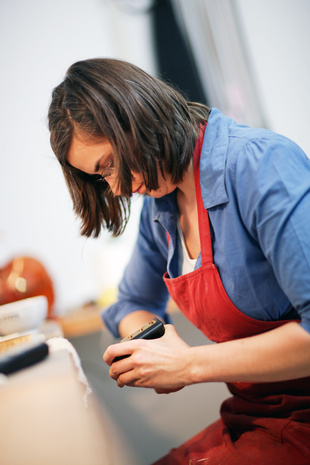
How did you acquire your love of music?
My mother is a very musical and music-loving person, and my father is a sculptor, so there was no way not to get into music or arts in our home. Mother taught piano at a music school and played a lot of different music at home, from classical music to the Beatles—all different kinds of ethnic and folk music. Our parents encouraged us to play instruments and to do crafty things with our hands, as well as to have our ears and eyes open for whatever comes our way.
I think my own real love for music started developing later, while singing in a choir. It deepened when I started visiting more concerts. Live music is the best. I just adore the atmosphere when excellent musicians are in the process of creating music—especially when you feel that they don’t have to worry about the technique anymore, when they are really communicating the intention or the message of the music.
How did you get started as a violinmaker?
My mother had a couple of friends who were violinmakers. After I graduated from school, I wanted to study a zillion subjects and couldn’t make up my mind, until I had the idea of becoming a violinmaker—and that was it. I attended a violinmaking school in Cremona, Italy, for a year. I was then offered an apprenticeship by one of my violinmaking friends from Bavaria, Germany, who had seen me work in his violinmaking course a year earlier. After that followed a couple of jobs with different violinmakers. Now I have my own workshop in Vienna, Austria.
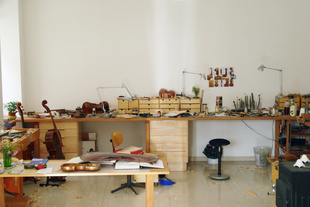
What was it like making your first violin?
My first stringed instrument was actually a viola da gamba (six-stringed Baroque instrument). I started it during a course for amateur violinmakers that took place in a medieval castle in Germany. It was pure joy. I loved everything—the wood, the tools, and carving my first arching of the viola da gamba top was an incredible pleasure. Everything was new, exciting, and mysterious.
What is involved in crafting your violins?
Wood, tools, glue, varnish, strings, and a lot of time, patience, and curiosity.
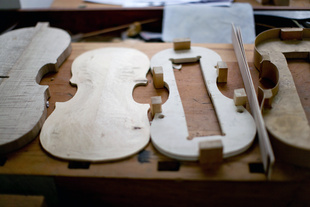
What is a normal day like?
I come to my shop around 8:30, check my email, make some tea, and start to work. A couple of customers come in or call, I re-hair some bows and try to do the work I planned for the day. In the case that I don’t have other appointments in the evening, I stay in the shop until I feel I’ve done enough. That makes some days long days.
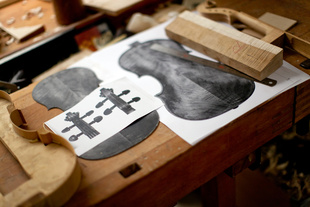
How do you know when a violin is finished?
When I have the feeling that it has found its sound. New violins, and also old instruments after a major restoration, need some time to settle. When you play an instrument for the first time you can hear the character, but the instrument needs to get used to the pressure of the strings, and to the vibration of being played. I learned from experience that the biggest changes happen during the first three months after I put strings on an instrument, and some minor changes keep happening within the first year or year and a half when the instrument is being played frequently. During that period of time, musicians return frequently for sound readjustments. At a certain point, the musician and I just hear and feel that the instrument is where it should be, sound-wise.
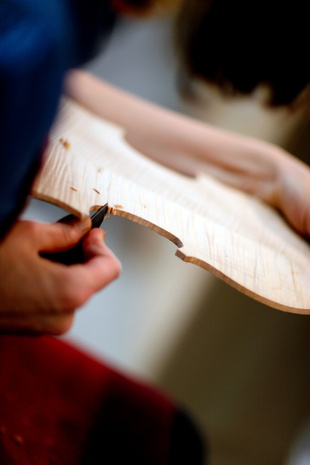
What is your favorite project you’ve worked on?
There are many. Let me name three:
One was two weeks restoring instruments and teaching apprentices for Violinmakers Without Borders in Havana—nice colleagues and apprentices, great musicians.
The second was not a real project, more a long row of projects working eighteen months for Christophe Landon in New York. He is a very energetic person with great instruments to work on. There were many major restorations to be made under some kind of time pressure, but there was also a lot of good and constructive energy in the workshop and the curiosity to try something new—it was amazing how much we managed to do within a very limited time.
And then there was copying an old Italian instrument for a customer who wasn’t wealthy enough to buy the original, and seeing him enjoy the look and the sound of the copy I made.
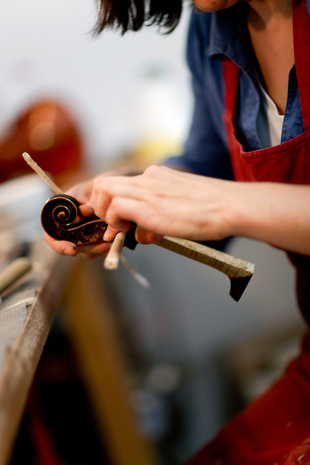
What do you consider your greatest achievement so far?
My survival of a 350-hour cello restoration in a time when I taught early morning seminary four times a week.
In what direction do you see your future heading?
I see my future in the world of instrument-making in working in dialogue with musicians on improving their instruments, in building new instruments, and in working on Baroque instruments—doing a lot of rebuilding and Baroque setup.
Vienna is a great place for that. It’s a city with approximately ten professional orchestras, several music colleges, and a long tradition of classical music in all the different styles.
More and more, antique instruments are bought as investments, which jacks the prices and makes the instruments less available for musicians. I think this is a sad development, but it is a great chance for new and good instruments to get the appreciation they deserve. The level of violinmaking has improved a lot in the last twenty years, and it is an exciting time for violinmakers.
On the other hand, the violinmaking industry in the Far East has also improved the quality of their instruments amazingly. Nobody knows where this development will lead the violinmaking world to within the next twenty years—in the case that they keep improving the quality without increasing the prices.
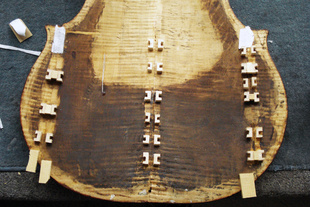
How does the gospel influence your work?
I have to admit that, although there is a violin by Stradivari called “the Messiah,” it’s not my favorite model. [Smile.]
The gospel doesn’t influence my work directly—my testimony in gospel principles doesn’t make my work cleaner or the sound more pure. I think where the gospel does influence my work is more by my trying to be open and able to realize what an instrument, or the wood I use for an instrument, needs.
Every instrument consists of a huge amount of variable parameters, and I need to be able to find out how to set up an instrument so that the instrument can bring out its personal maximum of sound, beauty, and character.
I think that’s how Heavenly Father works with us. He knows us and sees what we need to grow and to bring out the best we’re able to do. Every individual needs something different to be able to grow, and it’s the same with instruments: every violin or cello needs something else. Some need more pressure, some less; one needs this kind of strings, the other another kind. Although there are several years of experience working with instruments and there are certain things that have worked very well with seventy percent of the instruments, I need to be able to see, too, what the other thirty percent need, and I need to be careful not to tap into the trap of fast judgment or personal pride.
What is the most rewarding aspect of being an instrument maker?
To listen to an instrument I made in a concert—to hear that the instrument has come to life. ❧
